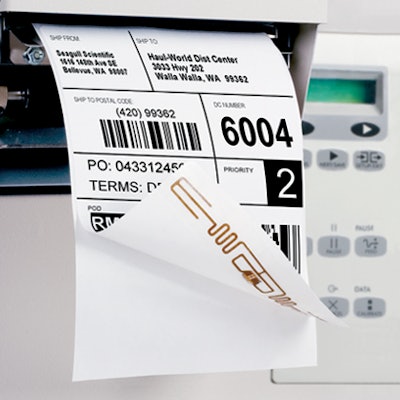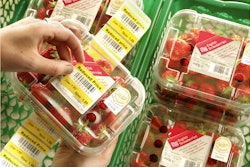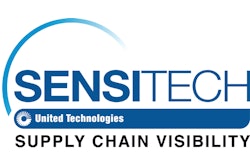
In 1982, a modified coke machine at Carnegie Mellon University became the first internet-connected appliance. It was able to report its inventory and whether newly loaded drinks were cold.
Since then, the internet has become a driving force, exerting its influence on relatively stable and undisturbed technologies such as barcode labeling, which hasn’t changed much from what it was when it first appeared in the 1960s.
“The idea of the Internet of Things (IoT) being able to connect devices and information by encoding readers, objects and information is now advancing to where the appliances in your kitchen can talk to each other,” says Elizabeth Sinclair, manager, verticals marketing for BarTender by Seagull Scientific, which specializes in barcode and smart labeling solutions. “A consumer can hold his or her smart phone to a refrigerator to troubleshoot a mechanical problem, so to take this one step further—what if you could obtain information about the food items in your refrigerator that would inform you about food freshness or a food recall on an item?”
One way this is now happening is through the use of quick response (QR) codes, which use a two-dimensional barcode that is able to capture more information about an item than a traditional barcode can.
“By using these two-dimensional QR barcodes, you can get around the limitations of a traditional linear barcode that can hold only 20 characters,” explains Sinclair. “When you add this second dimension of information, the barcode can now hold 7,000 characters, so there is immediately more data carriage. This enables access to data by smartphones
Another method for expanding barcode information is through radio frequency ID devices (RFID), which can carry much more data and also transmit the data in real time.
“RFID has been around for many years,” says Jody Costa, vice president of marketing for Barcoding Inc., which provides labeling solutions. “With QR code labels and IoT, RFID now has a new content and a file sharing concept that allows people globally to offer content by storing and accessing that content through the cloud. In the food and grocery business, there is a QR code on a box of cereal, and you can scan that code, which retrieves information from the cloud that can tell you the ingredients of the food, the manufacturing processes, and so on.”
In the warehouse, RFID readers also provide more flexibility than ever before. Today’s RFID can actually listen to codes and pick them up. It no longer has to be in the line of sight of a code—and the information that it picks up from codes is captured and reported in real time.
All of this adds up to not only smarter labels and smarter devices—but a smarter way of doing business.
Getting the Benefits of Smart Label Technology
To reap the benefits of IoT and smart labeling technology, companies have to invest in it. This is where smaller food and grocery companies face challenges, because they lack the investment dollars and the internal know-how to make it happen.
“There are still skillsets that must be mastered to understand how the software behind smart labels and the cloud utilization of smart label generated information works,” notes Dave Reba, director of consumables sales for Barcoding. “The cloud destination that smart label information gets sent to is embedded in the smart labels themselves. There is employee training that is needed so employees know which applications to load into the cloud-based information platform so the cloud can be integrated with the smart labels. This is the same technology that is used in many other cloud-based solutions. You also have to enable the cloud with software to accept input coming from smart labels and from access requests from consumers and businesses wanting to obtain information from these food and grocery smart labels that are stored in the cloud, and you have to prepare the information access capabilities on the labels themselves so that a scanned label can act as an access to the information about an item that is stored in the cloud for an end user.”
However, before they can embark on this journey, companies have to overcome the present situations they find themselves in.
“Many companies have departmental silos, meaning different departments that are involved in functions like barcode creation and labeling don’t talk to each other,” says Sinclair. “This can create confusion because no one department uses the same standards or methods in creating labels.”
Companies can start by evaluating their existing labeling practices. A single source of truth strategy should be established, with master data stored in one location. Access to label files should be carefully managed, and label files should be built with variable data fields that tie to the database. This eliminates the proliferation of labels generated from different parts of the organization that don't synchronize with a centrally standardized labeling methodology.
“Using IoT effectively starts with a standardized label production process and impeccable data management,” adds Sinclair. “When companies generate labels from different departments that haven't coordinated with each other, redundancies and errors occur. Consequently, work has to be done to establish a singular labeling method that everyone follows. When you use this practice, your master data is centralized, people can only modify certain data fields, and your data is going to be much more accurate. Then when a major change to data needs to be made, it can be made by an authorized person at the master data level—which automatically changes all of the downstream labeling that touches that data.”
Companies must also focus on the IT infrastructure behind smart label generation.
“You can do this by asking yourself what information gets stored in the cloud?” explains Reba. “How does the information on the label unlock the information in the cloud so it can provide information access to a requesting end user? This is the area of cloud and smart label generation that companies have to develop integration software for, and it needs to be carefully considered because the integration of smart labels and cloud-based information repositories can be complex. There are security as well as access issues that you need to think through.”
Also important is the reputation of the cloud service provider you are using. Can the provider provide the level of security and governance that you expect for your own applications? Do you have a set of SLAs (service level agreements) that are written into the contract with your cloud provider that minimally guarantees 99.99 percent uptime and rapid responses for problem resolution? What insurances and indemnification will your cloud provider give you if there is a security or a data breach in the cloud? Also, will your cloud provider be able to meet the compliance and regulatory requirements that you are subject to?
“Careful upfront planning is important for any IoT technology,” says Sinclair. “This begins with assessing your internal and external systems.”
Best Smart Label Practices
The smart label that connects to the IoT is a trigger that unlocks cloud-based information about a food or a grocery item and makes the information available to anyone who wants to know about it. Companies in food and grocery, like other industries, either are or will be using smart labels—so what IoT and smart barcode best practices can you use in your organization today?
“Content about everything is headed to the cellphone, so this is where organizations have to go,” says Costa. “It is time for food and grocery companies to get their minds around this. Every organization needs to be going this way because it will ultimately prove to be faster, cheaper and better. Since there is new technology to be learned, a good way to approach it is by watching what other larger organizations are doing. This can make you aware of the pain points and how to address them before you try the process yourself.”
Companies should also consider the data that you need in order to connect to your supply chain, your business partners and your customers—and where that data exists, says Sinclair.
“Integration of all of this data that comes in from different sources is a key issue, because if the data is coming in many different formats, achieving interoperability and IoT connectedness will be a challenge,” she adds.
Also, never forget that you can’t solve anything without people. If you’re using outmoded labeling processes, fix those first before you move forward into IoT and smart labels. If your challenge is adopting an IT infrastructure that integrates the cloud with on premises equipment and operations and also with your end consumers, survey your organization to see if you have the resident IT and business talent onboard. If you don't, you will have to invest in a combination of training, hiring and the use of consultants.
Finally, look at what some of the most aggressive smart label and IoT adopters have been doing, and copy their recipes for success.
“To date, one of the most aggressive industries in adopting smart labels has been retail,” says Costa. “For example, you can enter a brick-and-mortar store, try on a pair of slacks, scan the label on the slacks with your smart phone, and see everything about that pair of slacks, like where it was manufactured, what materials it is made of, etc.
“We’re also seeing aggressive adoption of smart labels in the healthcare industry, especially in the area of smart labels for pharmaceutical products,” she adds. “In the food and grocery industry, a primary driver of adoption has been more rigorous requirements for food track and trace from farm to table. Thus far, depending on internal know-how and the ability to fund, companies have unevenly adopted smart labeling—but more will get educated about smart labels going forward, and then develop their own smart label initiatives.”
No Time to Waste
The good news for companies is that as more smart labeling and IoT technologies are implemented, the prices are likely to come down, and the success use cases are likely to grow.
“Smart labels with cloud-based information is a technology that is still in early stages,” says Reba. “In the food and grocery industry, we can expect it to take three to five years to reach a maturation point and a more standardized process. There are also likely to be revisions on how smart label cloud services are priced as we learn more about how companies are using these services. It seems likely that there will be different pricing structures based upon how you are using smart labels, and also that many of the pricing structures will be based upon use.”
No matter, companies cannot afford to sit on the fence—because their competitors and customers certainly won’t.
“Smart labeling and IoT will make positive contributions to supply chains by improving production efficiency, product safety and supply chain transparency,” says Sinclair. “It won’t be long before consumers expect to get this information about their food.”



















